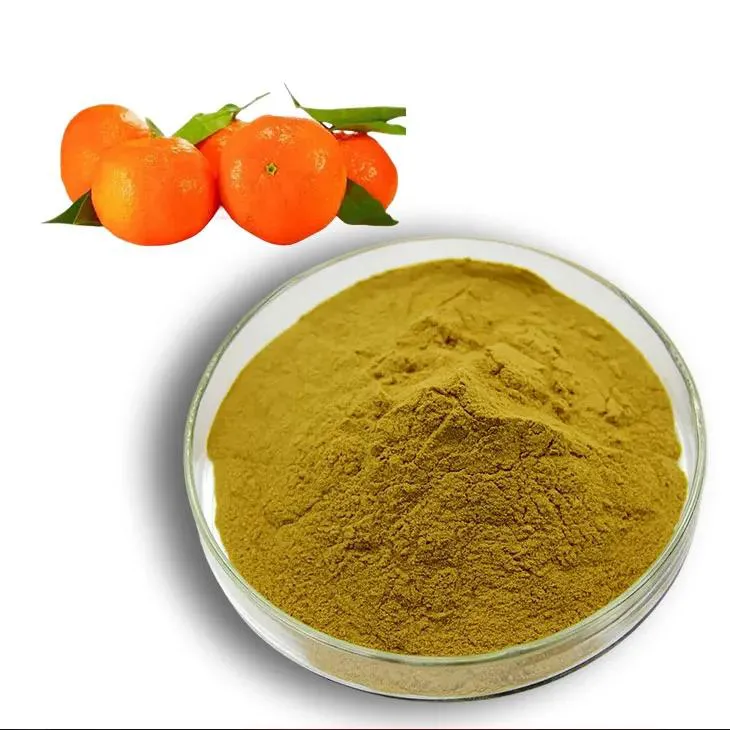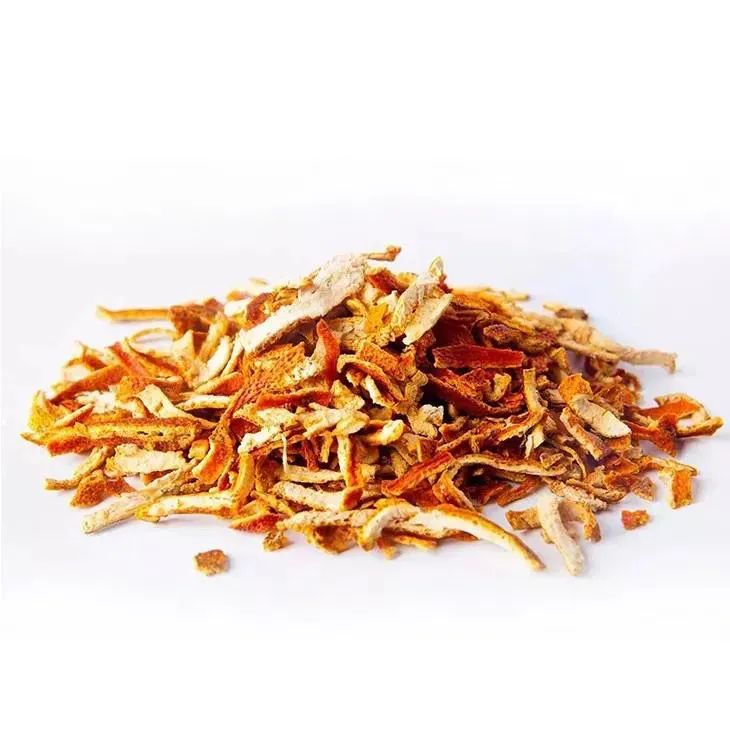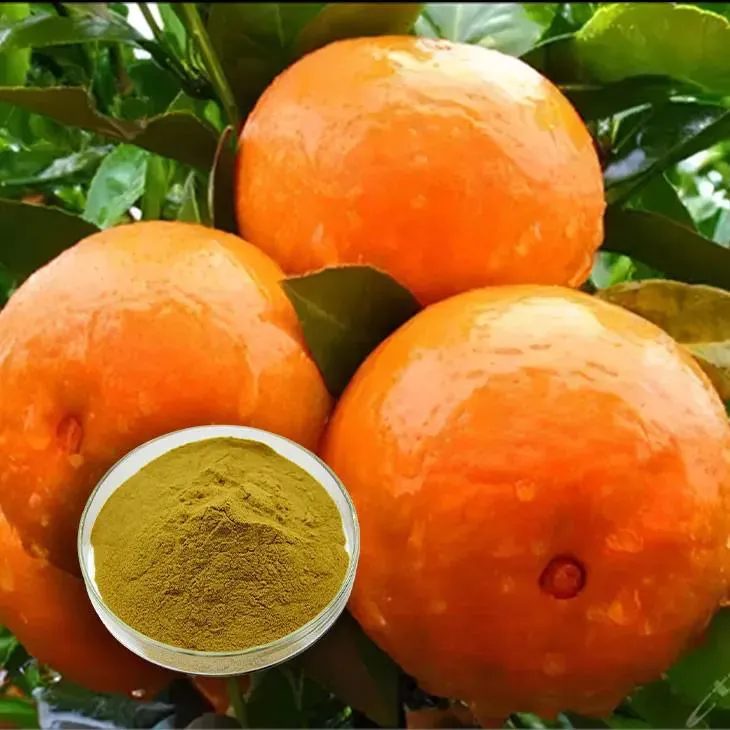- 0086-571-85302990
- sales@greenskybio.com
The Best Citrus Bioflavonoids in 2024.
2024-11-29

Introduction
In 2024, the interest in citrus bioflavonoids has been growing steadily. Citrus bioflavonoids are a large and diverse group of chemical compounds that are naturally present in citrus fruits. These fruits, which include oranges, lemons, grapefruits, and limes, have long been recognized for their nutritional value. However, it is only in recent years that the specific role of bioflavonoids within these fruits has come to the forefront of scientific research.
Citrus bioflavonoids offer a wide range of health benefits. They are an important part of the body's antioxidant defense system. Antioxidants are substances that can prevent or slow damage to cells caused by free radicals. Free radicals are unstable molecules that are produced during normal metabolism and can also be generated by environmental factors such as pollution, radiation, and cigarette smoke. By neutralizing free radicals, citrus bioflavonoids help to protect the body from various diseases and promote overall well - being.

Types of Citrus Bioflavonoids
Hesperidin
Hesperidin is one of the most well - known citrus bioflavonoids. It is abundant in oranges and lemons. Hesperidin has been studied for its potential role in maintaining the health of blood vessels. It can help to strengthen the walls of blood vessels, making them more resistant to damage. This can in turn reduce the risk of cardiovascular diseases such as heart attacks and strokes.
Research has also suggested that hesperidin may have anti - inflammatory properties. Inflammation is a natural response of the body to injury or infection, but chronic inflammation can contribute to the development of many diseases, including arthritis, diabetes, and certain cancers. By reducing inflammation, hesperidin may play a role in preventing or treating these conditions.
Naringenin
Naringenin is another important citrus bioflavonoid, mainly found in grapefruits. Naringenin has attracted attention for its potential effects on metabolism. It may help to regulate the body's metabolic processes, such as glucose and lipid metabolism.
Studies have shown that naringenin can improve insulin sensitivity, which is beneficial for people with diabetes or those at risk of developing diabetes. It may also help to lower blood lipid levels, including cholesterol and triglycerides, reducing the risk of heart disease.
Quercetin
Quercetin is a powerful antioxidant that is present in many citrus fruits as well as other plant sources. Quercetin has strong anti - inflammatory properties, which can help to reduce the risk of chronic diseases associated with inflammation.
It has also been studied for its potential anti - cancer effects. Although more research is needed, some studies have suggested that quercetin may be able to inhibit the growth and spread of cancer cells. Additionally, quercetin may have beneficial effects on the immune system, helping to boost the body's defenses against infections.

Sources of Citrus Bioflavonoids
As mentioned earlier, citrus fruits are the primary source of citrus bioflavonoids. However, the concentration of different bioflavonoids may vary among different types of citrus fruits.
- Oranges: Oranges are rich in hesperidin. They are one of the most commonly consumed citrus fruits and can be easily incorporated into the diet in the form of fresh fruit, juice, or as an ingredient in various recipes.
- Lemons: Lemons also contain hesperidin, as well as other bioflavonoids. Lemon juice is a popular ingredient in cooking, baking, and beverage preparation, providing a source of bioflavonoids in addition to its characteristic flavor.
- Grapefruits: Grapefruits are a significant source of naringenin. They are often consumed for breakfast or as a snack, and their bioflavonoid content may contribute to the potential health benefits associated with grapefruit consumption.
- Limes: Limes contain various citrus bioflavonoids, although they may not be as well - studied as those in oranges, lemons, and grapefruits. Nevertheless, they are used in cooking and in the preparation of drinks, adding a unique flavor and potentially some bioflavonoid benefits.
In addition to fresh citrus fruits, citrus bioflavonoids can also be obtained from citrus - based products such as citrus extracts, supplements, and fortified foods. However, it is important to note that when using supplements, it is necessary to follow the recommended dosage and consult a healthcare professional, as excessive intake of bioflavonoids may have potential side effects.

How Citrus Bioflavonoids Contribute to Overall Well - being
Cardiovascular Health
Citrus bioflavonoids play an important role in maintaining cardiovascular health. As mentioned earlier, hesperidin can strengthen blood vessel walls and reduce inflammation in the blood vessels. This can help to lower blood pressure and improve blood flow, reducing the risk of heart disease and stroke.
Naringenin's effects on lipid metabolism can also contribute to cardiovascular health. By reducing cholesterol and triglyceride levels, it helps to keep the blood vessels clean and free from plaque buildup.
Immune System Support
Quercetin's potential to boost the immune system is one of its important contributions to overall well - being. A strong immune system is essential for fighting off infections and diseases. By reducing inflammation and having antioxidant properties, quercetin can help to optimize the function of the immune system.
Other citrus bioflavonoids may also have some immune - modulating effects, although more research is needed to fully understand their mechanisms of action.
Anti - Inflammatory Effects
All three of the main citrus bioflavonoids - hesperidin, naringenin, and quercetin - have anti - inflammatory properties. Chronic inflammation is a major factor in the development of many diseases, including autoimmune diseases, neurodegenerative diseases, and certain cancers.
By reducing inflammation, citrus bioflavonoids can help to prevent or slow down the progression of these diseases. They can also help to relieve symptoms associated with inflammation, such as pain and swelling.
Metabolic Regulation
Naringenin's role in regulating metabolism is crucial for maintaining a healthy body weight and preventing metabolic disorders such as diabetes and obesity. By improving insulin sensitivity and lipid metabolism, it helps the body to process sugars and fats more efficiently.
Hesperidin may also have some effects on metabolism, although more research is needed to fully understand its role in this area.
Conclusion
In 2024, citrus bioflavonoids continue to be an area of great interest in the field of nutrition and health. The different types of citrus bioflavonoids, such as hesperidin, naringenin, and quercetin, offer a wide range of health benefits. They are found in citrus fruits, which are widely available and can be easily incorporated into the diet.
However, more research is still needed to fully understand the mechanisms of action of citrus bioflavonoids and to determine the optimal dosage for different health conditions. In addition, it is important to note that while citrus bioflavonoids can contribute to overall well - being, they should not be considered a substitute for a healthy lifestyle, which includes a balanced diet, regular exercise, and stress management.
FAQ:
What are citrus bioflavonoids?
Citrus bioflavonoids are a diverse group of compounds found in citrus fruits. They offer various health benefits and play important roles in antioxidant activity in the body.
What are the main types of citrus bioflavonoids?
The main types include hesperidin, naringenin, and quercetin. Each of them has unique properties. For example, hesperidin can improve blood vessel health, naringenin may affect metabolism positively, and quercetin is a powerful antioxidant with anti - inflammatory properties.
How do citrus bioflavonoids contribute to antioxidant activity?
Citrus bioflavonoids help combat free radicals in the body, which is crucial for antioxidant activity. By neutralizing these free radicals, they can protect cells from damage and support overall health.
What are the sources of citrus bioflavonoids?
The main sources are citrus fruits such as oranges, lemons, grapefruits, etc. These fruits contain different types of citrus bioflavonoids in varying amounts.
How can citrus bioflavonoids contribute to overall well - being?
They contribute to overall well - being through their antioxidant and anti - inflammatory properties, as well as their specific effects on blood vessels and metabolism. For example, by protecting cells from damage, reducing inflammation, and improving the function of blood vessels and metabolism, they can enhance the body's health at multiple levels.
Related literature
- Citrus Bioflavonoids: A Review of Their Potential Health Benefits"
- "The Role of Citrus Bioflavonoids in Antioxidant Defense Systems"
- "Citrus Bioflavonoids: Sources, Properties and Impact on Human Health"
- ▶ Hesperidin
- ▶ citrus bioflavonoids
- ▶ plant extract
- ▶ lycopene
- ▶ Diosmin
- ▶ Grape seed extract
- ▶ Sea buckthorn Juice Powder
- ▶ Beetroot powder
- ▶ Hops Extract
- ▶ Artichoke Extract
- ▶ Reishi mushroom extract
- ▶ Astaxanthin
- ▶ Green Tea Extract
- ▶ Curcumin Extract
- ▶ Horse Chestnut Extract
- ▶ Other Problems
- ▶ Boswellia Serrata Extract
- ▶ Resveratrol Extract
- ▶ Marigold Extract
- ▶ Grape Leaf Extract
- ▶ blog3
- ▶ blog4
-
China's banana juice powder suppliers.
2024-11-29
-
Bulk purchase of cranberry extract.
2024-11-29
-
How to make powder with bayberry extract?
2024-11-29
-
The best peony root extract in nature.
2024-11-29
-
100% Pure Organic Baicalin.
2024-11-29
-
Mangosteen extract powder
2024-11-29
-
Kelp Extract Powder
2024-11-29
-
Tinospora cordifolia extract
2024-11-29
-
Angelica sinensis extract
2024-11-29
-
Hawthorn powder
2024-11-29
-
Boswellia Serrata Extract
2024-11-29
-
White Willow Bark Extract
2024-11-29
-
Lavender Extract
2024-11-29
-
Maitake Mushroom Extract
2024-11-29
-
Tongkat Ali Extract Powder
2024-11-29





















